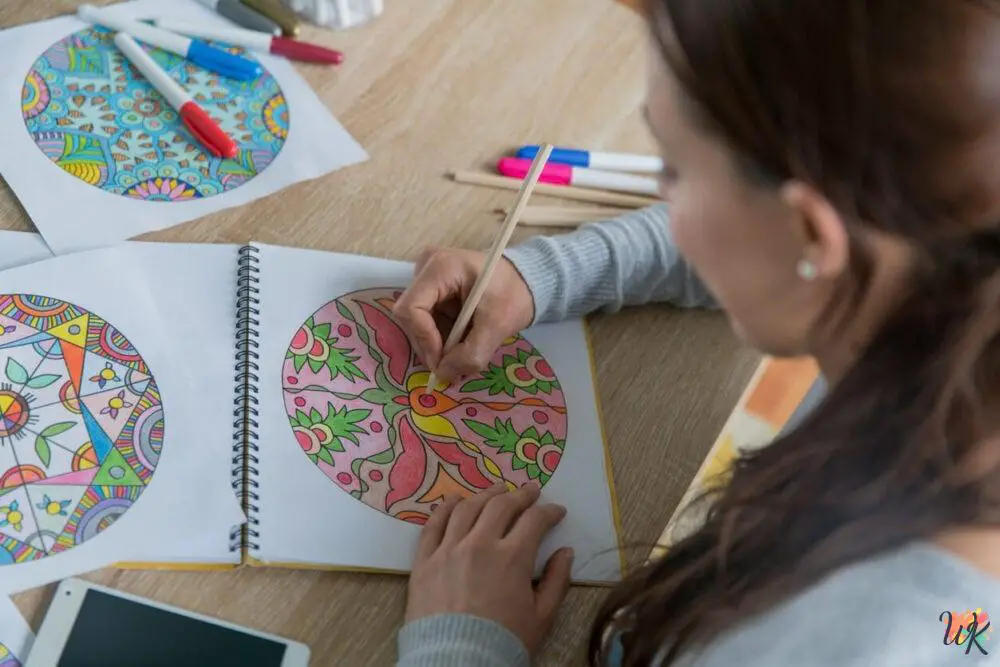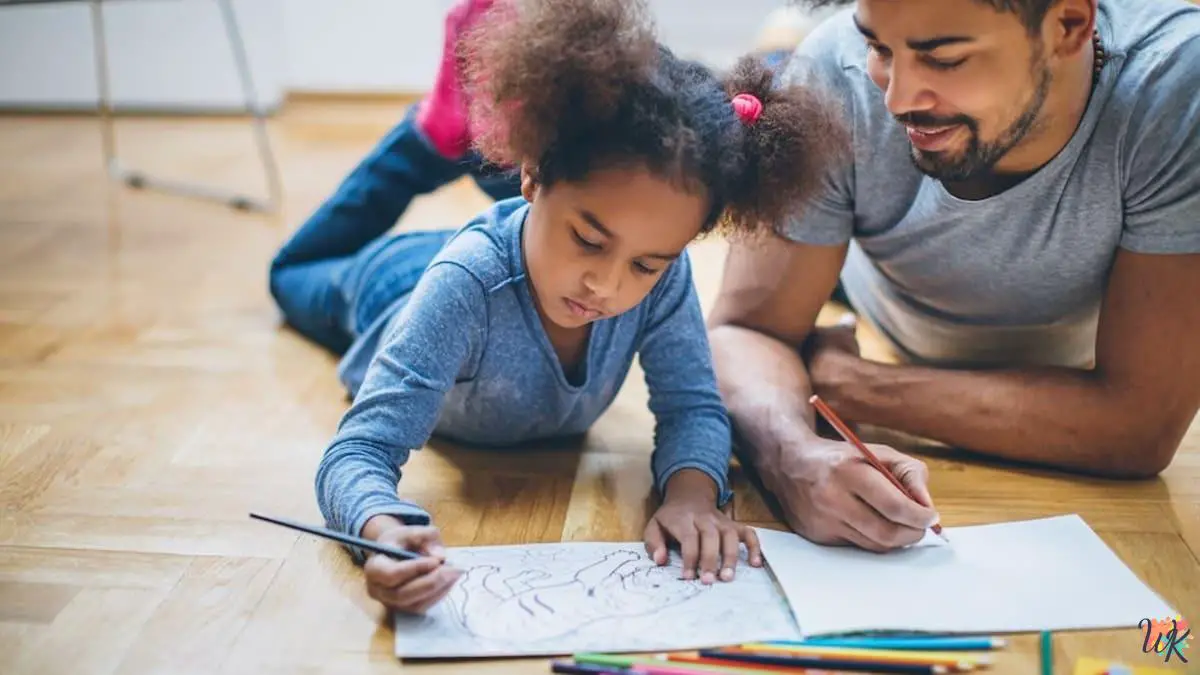Coloring pages have been a beloved activity for children for generations. However, beyond being a simple pastime, coloring pages offer a plethora of educational benefits that can significantly impact a child’s development. This article explores the vast potential of coloring pages as a valuable educational tool, exploring how they contribute to children’s creativity, motor skills, focus, and overall learning experience.

The Educational Potential of Coloring Pages
Coloring pages can serve as powerful educational aids due to their versatility and ability to engage young minds. Let’s delve into some of the ways coloring pages can unlock educational opportunities:
1. Enhancing Creativity and Imagination
Coloring pages provide children with a canvas to unleash their creativity and imagination. By selecting colors and creating unique combinations, children develop their artistic abilities and discover their preferences. This creative expression contributes to their cognitive growth and fosters a sense of accomplishment.
2. Developing Fine Motor Skills
The act of coloring involves precise hand movements and coordination, which helps children develop their fine motor skills. Holding and controlling crayons or colored pencils enhances hand-eye coordination, improving their dexterity and preparing them for more intricate tasks in the future.
3. Promoting Focus and Concentration
Engaging with coloring pages demands a child’s attention and concentration. As they immerse themselves in the activity, their ability to focus on the task at hand improves. This heightened concentration extends to other academic activities and daily tasks.
4. Introducing New Concepts and Knowledge
Educational coloring pages often feature various themes, such as animals, plants, historical figures, and more. These pages provide an excellent platform to introduce children to new concepts and knowledge. Whether it’s learning about different animal species or historical events, coloring pages make the process enjoyable and engaging.
5. Stimulating Brain Development
Coloring stimulates both the left and right hemispheres of the brain. The logical aspect of selecting colors and staying within lines activates the left brain, while the creativity involved taps into the right brain. This harmonious brain activation enhances cognitive development.
6. Encouraging Language and Communication Skills
Coloring sessions can be transformed into interactive discussions, encouraging children to describe their choices and explain the stories behind their artwork. This practice strengthens language and communication skills, enabling children to articulate their thoughts effectively.
7. Fostering Emotional and Social Development
Coloring can be a therapeutic activity that helps children express their emotions and feelings in a non-verbal manner. Additionally, coloring in groups fosters social interactions, promotes teamwork, and enhances empathy and understanding among peers.

Integrating Coloring Pages into Classroom Settings
Educators recognize the value of incorporating coloring pages into the classroom environment. Integrating coloring activities into lesson plans can complement various subjects and reinforce learning outcomes. Furthermore, it creates an enjoyable and engaging classroom experience.
Coloring Pages in Homeschooling
Homeschooling parents can leverage coloring pages as a valuable educational resource. Coloring activities can complement homeschooling curricula, offering a balanced approach to learning and creating a fun and relaxed environment for children to explore new concepts.
Coloring Pages as Therapeutic Tools
Beyond the academic setting, coloring pages are also used as therapeutic tools for children facing emotional or psychological challenges. Engaging in coloring activities can provide a sense of calm and help children cope with stress and anxiety.
Interactive Learning with Coloring Pages
With the advent of technology, coloring pages have gone digital, offering interactive learning experiences. Interactive coloring apps and websites allow children to explore a vast array of coloring pages with additional features such as animations and sound effects, enhancing the overall learning experience.
The Future of Educational Coloring Pages
As technology continues to advance, the potential of educational coloring pages will expand even further. With augmented reality and virtual reality becoming more prevalent, coloring pages could evolve into immersive educational tools that transport children to different eras or far-off places, fostering a deeper understanding of the world around them.

Conclusion
Coloring pages are much more than a simple childhood activity. They hold immense educational potential, unlocking creativity, enhancing cognitive abilities, and fostering a love for learning. By incorporating coloring pages into classrooms, homeschooling, and therapeutic settings, educators and parents can offer children a well-rounded and enriching educational experience.
FAQs
Are coloring pages suitable for all age groups?
Coloring pages can be adapted to suit different age groups, with varying levels of complexity and subject matter.
How can parents encourage children to engage with coloring pages?
Parents can participate in coloring activities with their children, providing a positive and supportive environment that encourages creativity.
Can coloring pages be used as a relaxation technique for adults?
Yes, coloring pages can serve as a therapeutic activity for adults, promoting relaxation and stress relief.
Are digital coloring pages as beneficial as traditional ones?
Digital coloring pages offer unique interactive features that can enhance the learning experience, making them equally valuable.
Can coloring pages be integrated into distance learning programs?
Yes, coloring pages can be integrated into distance learning programs, offering engaging and educational content for remote learners.

Hi there! My name is Becky Gomez, and I was born on December 12th, 1992 in the great United States of America. I am passionate about all things art and have always dreamed of sharing my love of art with others.
To pursue my passion, I attended some of the most prestigious art and painting schools in the United States. I earned a Bachelor of Fine Arts degree from the Rhode Island School of Design, followed by a Master’s degree in Art Education from Columbia University in New York.
Currently, I am an elementary school art teacher, inspiring and guiding young minds to explore their creativity and imagination. I believe that art education is an essential aspect of a well-rounded education and can be used to teach children valuable skills and important life lessons.
Outside of work, I am a savvy SEO professional and have created 5 popular coloring websites: ColoringpagesWk.com, Kleurplatenwk.nl, Disegnidacolorarewk.com, Dibujosparacolorearwk.com, and Coloriagewk.com. My goal with these websites is to provide fun and engaging resources for children to learn about art while also having fun.
I am passionate about using my talents and expertise to make a positive impact on the world, and I believe that education and the arts are the keys to achieving this goal. I am always looking for new opportunities to create and innovate, and I can’t wait to see what the future holds.
Contact Info:
Street: 950 Doyers Street
City: New York
State: NY
Phone: +1202-555-0126
Zipcode: 10013
Country: United States
